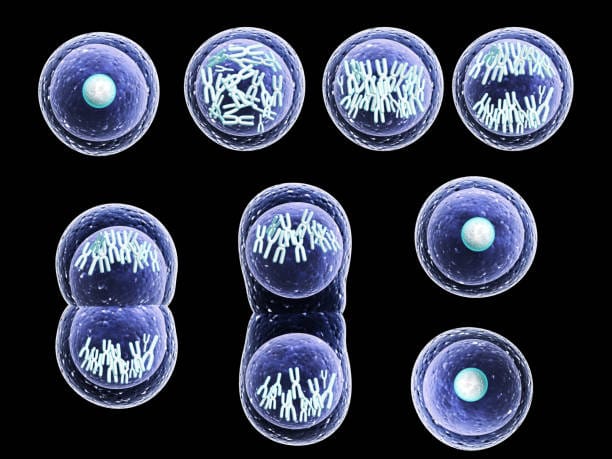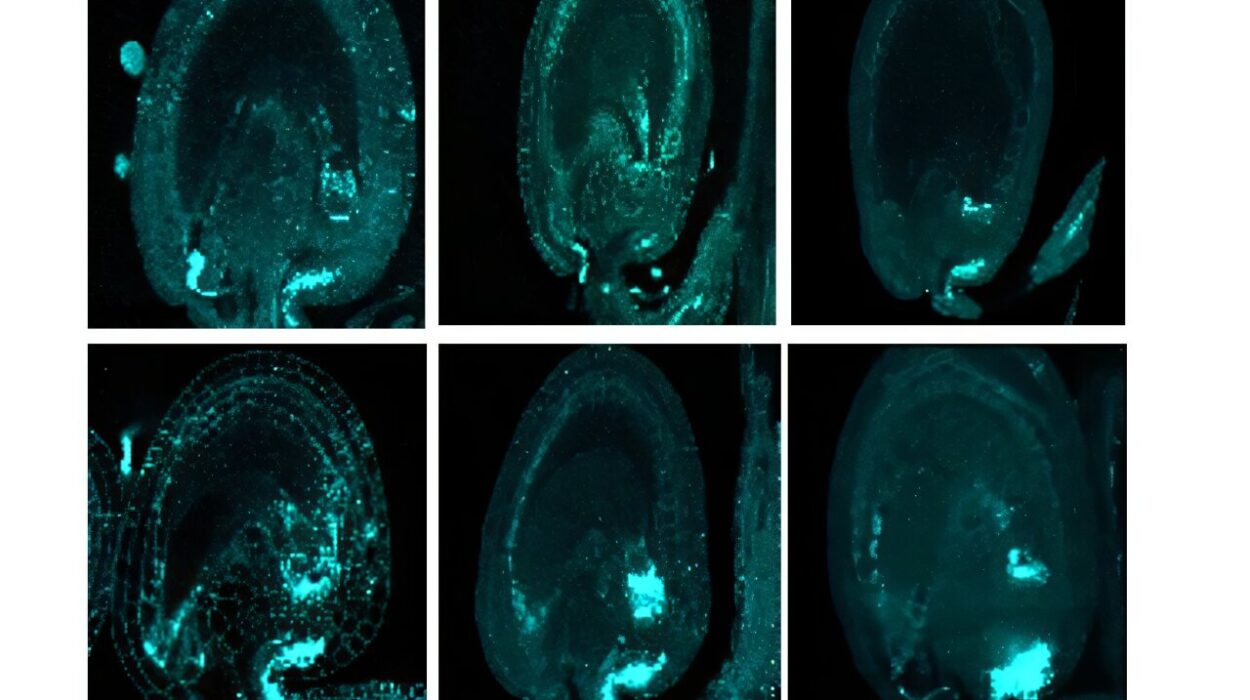If you were to hold a grain of sediment in your hand and examine it with the naked eye, you might see nothing but a speck of dust. But through the lens of a microscope, that ordinary grain can reveal an entire lost world. Within it may lie the preserved remains of organisms that lived millions—even billions—of years ago. These are microfossils, some of the smallest yet most powerful storytellers in Earth’s history.
Microfossils are the overlooked whispers of the ancient Earth. They are so tiny—most less than a millimeter in size—that they evade casual detection. Yet, hidden in those minuscule shells, filaments, and fragments is the record of evolving climates, vanished ecosystems, mass extinctions, and the very origin of life itself. To dismiss them as insignificant is to ignore the library of deep time bound in stone.
They are not just relics of the past; microfossils are active participants in the modern science of climate change, oil exploration, evolutionary biology, and even astrobiology. Their importance cannot be overstated, and yet their stories often go untold. Let us journey into this invisible realm, where microscopic life shaped the planet in ways both mysterious and magnificent.
The Definition That Opens a Universe
In the broadest sense, a microfossil is any fossil that requires a microscope or magnifying lens for proper study. But within that definition is a galaxy of diversity. Some microfossils are the shells of single-celled plankton that floated in the ancient oceans. Others are spores and pollen grains that drifted through prehistoric air, or the microscopic teeth and bones of tiny animals. There are even microbial filaments fossilized in ancient rocks—possible echoes of Earth’s earliest life forms.
These fossils fall into two main categories: plant microfossils (such as pollen and spores) and animal microfossils (such as foraminifera and radiolarians). But there are gray areas and overlaps, especially when it comes to the fossilized remains of bacteria, archaea, and algae. Some microfossils are made of silica; others of calcium carbonate. Some are organic. Many are encased in sedimentary rocks, but some are preserved in amber, ice, or volcanic ash.
What they all have in common is scale. Their small size means they are ubiquitous, often preserved in sediments when larger fossils are absent. Because they are so numerous and can be found in vast quantities, they serve as valuable time markers and environmental indicators—tools as precise as they are ancient.
First Impressions of Ancient Life
Microfossils have revealed not only the oldest life on Earth but the very conditions under which life arose. The oldest accepted microfossils date back over 3.4 billion years and were found in the Warrawoona Group in Western Australia. These microscopic filaments resemble modern-day cyanobacteria and suggest that life had already established complex communities in shallow seas long before animals or plants appeared.
More recent findings, such as stromatolites—layered structures formed by microbial mats—contain preserved textures and mineral patterns that offer indirect evidence of life as far back as 3.5 to 3.7 billion years. Though some scientists debate their biogenic origin, the possibility that microbial life thrived on a young Earth shrouded in volcanic gas and ultraviolet light is astonishing.
These discoveries give us a glimpse into the formative eons of our planet. They suggest that life arose relatively quickly after Earth cooled and that microbial life may be a natural outcome when water, energy, and chemistry are right. This has profound implications not just for our understanding of Earth’s history but for the search for life on Mars or on distant exoplanets.
A Window Into Earth’s Shifting Climates
One of the most critical roles of microfossils is in reconstructing Earth’s ancient climates. Foraminifera, tiny marine organisms that build calcium carbonate shells, are particularly invaluable. As these creatures grow, they incorporate oxygen isotopes from seawater into their shells. Because the ratio of oxygen isotopes changes with global temperatures and ice volume, the chemical composition of foraminiferal fossils offers a high-resolution record of past climates.
By analyzing sediment cores from the ocean floor, scientists have been able to reconstruct detailed climate records stretching back tens of millions of years. These records reveal the oscillations between ice ages and warm periods, abrupt shifts in ocean circulation, and the carbon cycle’s intimate dance with temperature.
Microfossils also document the onset of catastrophic events. At the boundary between the Cretaceous and Paleogene periods—about 66 million years ago—a thin layer of sediment rich in iridium marks the asteroid impact that killed the dinosaurs. In that layer, the diversity of foraminifera collapses. What was once a flourishing ocean of micro-life is suddenly reduced to a sparse, impoverished community. Microfossils record extinction, survival, and recovery at a fidelity that few other fossils can match.
The Story Beneath Our Feet: Microfossils and Oil
Beyond their scientific allure, microfossils play a practical role in the modern economy. The fossil fuel industry relies on them for subsurface dating and locating reservoirs of oil and natural gas. Because microfossils evolve rapidly and are widespread, they serve as excellent index fossils—species that can pinpoint the age of a rock layer to within a narrow window of geological time.
When oil companies drill into sedimentary basins, they retrieve core samples from thousands of feet underground. Paleontologists then examine the microfossils in these cores to determine the age, depositional environment, and geochemical conditions of the sediment. This helps geologists map the subsurface and identify “sweet spots” for oil accumulation.
While the ethical questions surrounding fossil fuels are urgent and unavoidable, the science behind their discovery underscores the profound reach of microfossils. They are not just the echo of Earth’s past—they actively shape its present.
Painting Prehistoric Ecosystems with a Single Grain
Microfossils can reconstruct entire ancient landscapes. Pollen and spores, preserved in lakebeds and peat bogs, offer a detailed view of past vegetation. By examining changes in plant microfossils through sediment layers, scientists can track the advance and retreat of forests, grasslands, and deserts across millennia.
This is especially important for understanding the relationship between humans and their environment. In Europe, for instance, shifts in pollen records show when ancient forests were cleared for agriculture. In the Americas, the decline of maize pollen and other cultivated species aligns with the collapse of pre-Columbian civilizations.
Some microfossils even offer clues about the diets of ancient people and animals. Coprolites—fossilized feces—sometimes contain plant fragments, spores, and even parasite eggs. These tiny relics help archaeologists reconstruct what people ate, what diseases they carried, and how their societies functioned.
In Arctic permafrost and tropical swamps, preserved microfossils continue to reveal lost worlds. Sometimes a single spore, trapped in amber or ice for tens of thousands of years, can rewrite a chapter of ecological history.
Microfossils as Clocks and Compasses
Geological time is vast, and rocks do not come labeled with dates. Microfossils help geologists build the calendar of deep time. Biostratigraphy—the dating of rock layers using fossil evidence—relies heavily on microfossils, especially in marine environments where larger fossils are rare or absent.
Some groups, like coccolithophores, radiolarians, and conodonts, evolved rapidly and left behind globally distributed fossil records. This makes them ideal for establishing relative ages of sedimentary sequences across different continents. With their help, geologists have stitched together a coherent timeline of Earth’s history—from the rise of life to the shaping of continents and the evolution of oceans.
Microfossils also function as geological compasses. Because different species thrive in different environmental conditions, their presence or absence can tell us whether a rock was formed in deep ocean, shallow reef, brackish estuary, or freshwater lake. Their assemblages can point to shifts in sea level, salinity, temperature, and nutrient availability.
Like ancient navigators, scientists use these tiny indicators to chart the vast and chaotic seas of Earth’s geologic past.
Microfossils and the Origins of Evolution
Darwin’s theory of evolution found elegant support in the fossil record, but it was the microfossil record that revealed the early pages of life’s evolutionary story. For much of Earth’s history, life was microscopic. For more than two billion years before multicellular organisms arose, bacteria and archaea dominated the biosphere.
By studying microbial mats, stromatolites, and microbial filaments fossilized in ancient rocks, scientists are learning how simple life adapted, diversified, and altered the planet’s chemistry. Microfossils show the evolution of photosynthesis, the rise of oxygen in the atmosphere, and the first complex eukaryotic cells with internal structures.
The fossil record of protists—the single-celled eukaryotes—reveals a dazzling array of morphologies. Diatoms, dinoflagellates, and forams display evolutionary radiations and extinctions that mirror larger organisms but on a much finer scale. They are the canaries in Earth’s evolutionary coal mine—responding quickly to environmental changes, and often recovering just as swiftly.
Microfossils have taught us that evolution is not just the story of dinosaurs and mammoths. It is the story of resilience at the smallest scales, where life first flourished and continued to adapt through every planetary crisis.
Echoes of Life Beyond Earth
One of the most tantalizing applications of microfossil research lies not on Earth, but in the stars. Astrobiologists studying Mars and icy moons like Europa and Enceladus often look to microfossils for inspiration. If life once existed on those worlds, it likely did so at the microbial level.
Studying ancient microfossils on Earth teaches scientists what biosignatures to look for on other planets. What mineral textures, isotopic ratios, or microscopic structures might indicate life? How can we distinguish true fossils from abiotic mimics? These questions are central to space missions searching for life.
The Martian meteorite ALH84001 once made headlines because it contained possible microfossil-like structures. Though the claim remains controversial, it raised a profound possibility: that a single microscopic structure could redefine humanity’s place in the cosmos.
If life is found beyond Earth, it will likely come not as a shout but as a whisper—from something no larger than a grain of dust.
A Future Written in Microfossils
As climate change accelerates and biodiversity declines, microfossils continue to act as guardians of Earth’s long memory. They remind us how quickly environments can change, how fragile ecosystems can be, and how interconnected life truly is. With their help, scientists model future climates, track ocean acidification, and monitor ecosystem health.
In the Anthropocene—the age of human impact—we too leave behind microfossils. Tiny particles of plastic, soot, and industrial byproducts are entering the sedimentary record. Future geologists may study these artifacts the way we study ancient foraminifera. We are becoming part of the microfossil story.
Yet within that sobering thought lies hope. By listening to the past encoded in these ancient grains, we may better navigate the uncertainties of our future. We may learn not just how the Earth has changed, but how it endures.
The Poetry of the Invisible
To peer into a microscope and see a world millions of years old is to witness time suspended in glass. Each microfossil is a fragment of Earth’s autobiography—written in silicate, carbonate, or organic film. They are the skeletons of vanished seas, the pollen of forgotten forests, the breath of ancient atmospheres.
They teach us that size is no measure of significance. That truth hides in overlooked places. That the past is never truly gone—it is layered beneath our feet, etched in the finest of details, waiting for those willing to look closely.
In an age of overwhelming scale, where we gaze at galaxies and global crises, the microfossil brings us back to the essence of scientific wonder: that in the smallest things, the entire universe can be found.






